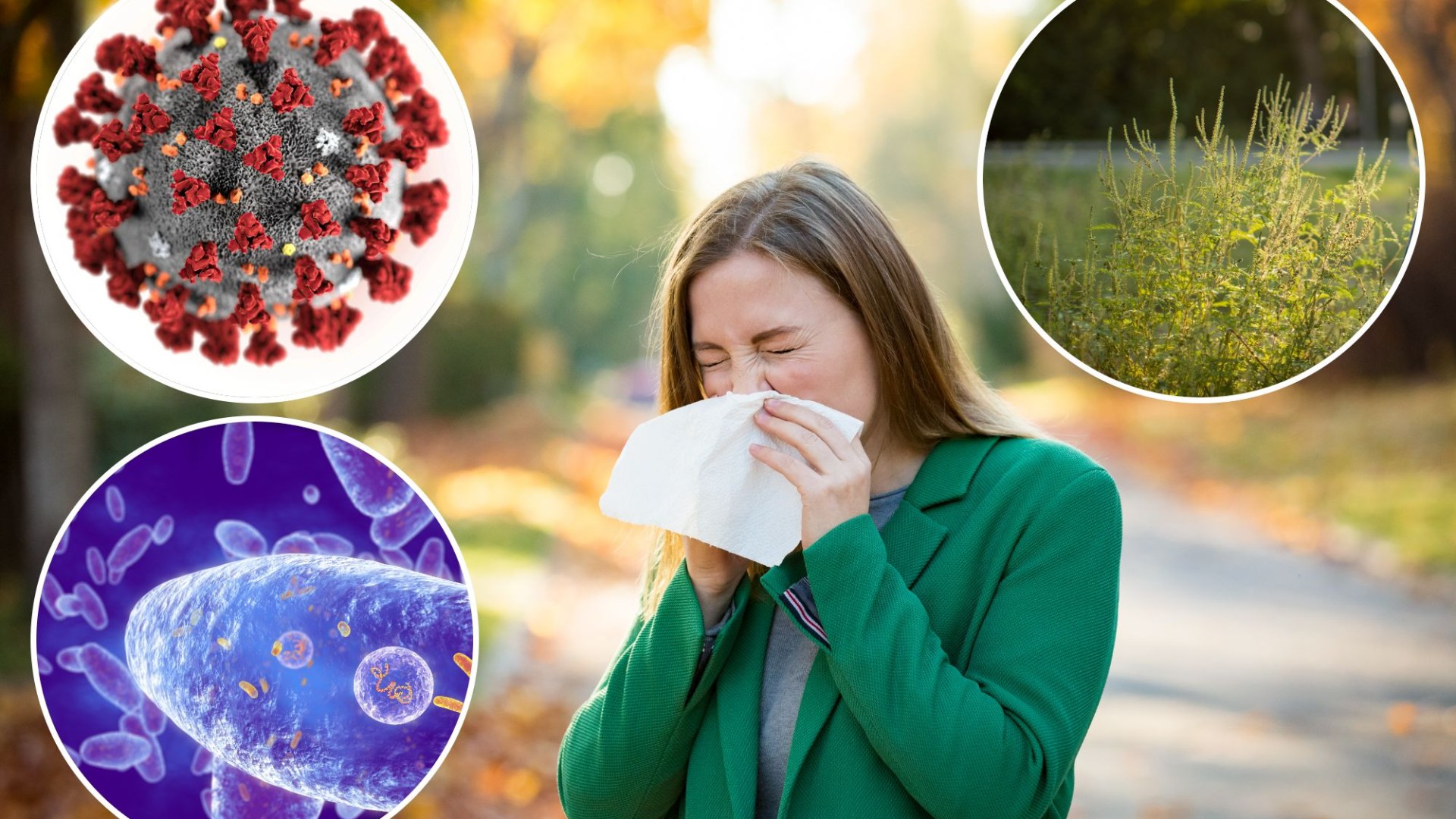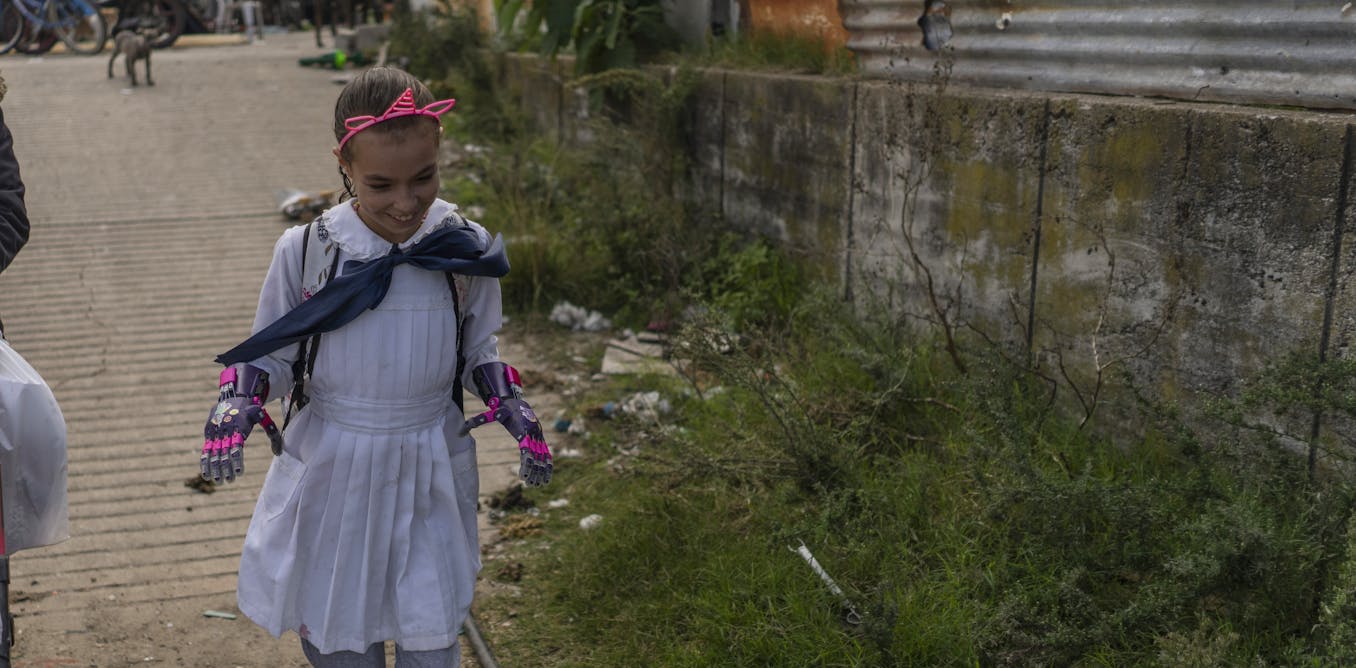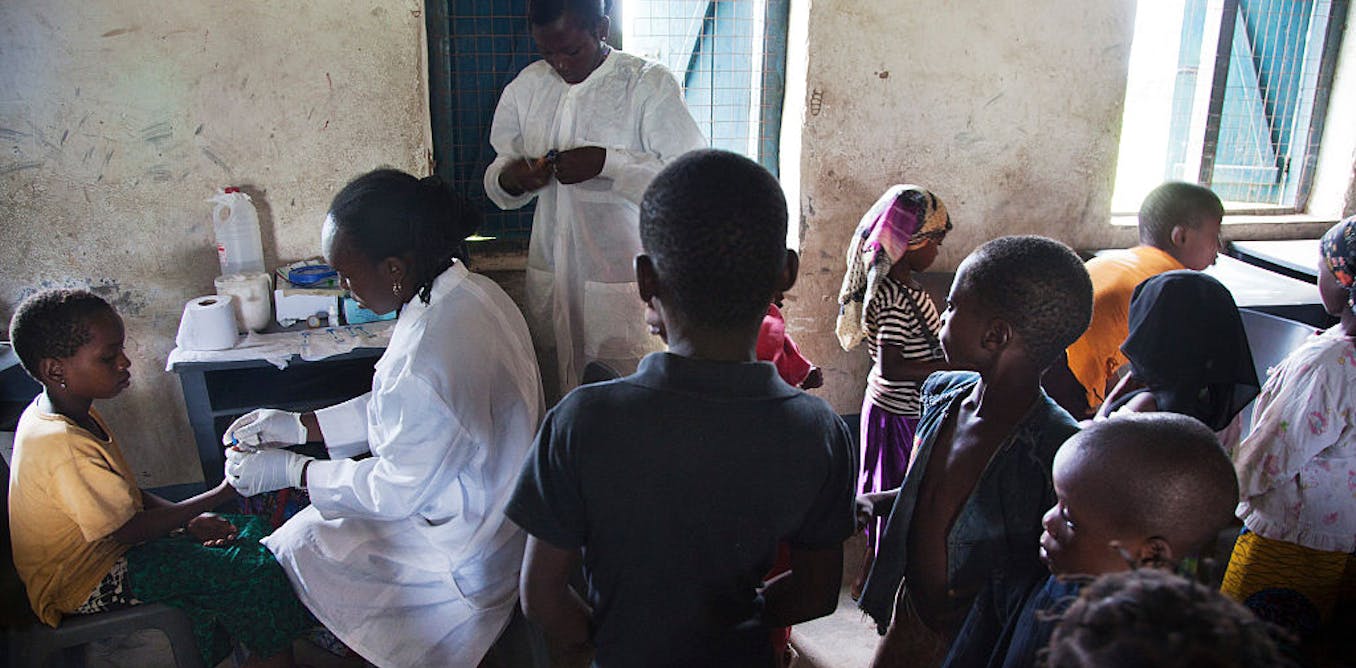IT’S that time of year again when everyone seems to be coughing, sneezing and blowing into tissues.
Before the pandemic, this was never much of an issue – but now, so much as a splutter can lead to raised eyebrows on the train and looks of concern from people in the office.
6
Is it the new Covid variant? A dose of the 100-day-cough? Or is it a side effect of the changing seasons?
‘Autumn sneezing syndrome’, as it’s otherwise called, can leave sufferers with sneezing fits and runny noses, which can be easily mistaken for winter bugs.
“Autumn sneezing syndrome can be triggered by outdoor and indoor allergens,” Dr Adrian Morris, principal allergist at Surrey Allergy Clinic, tells the Sun.
“Most people don’t associate autumn with pollen, so they might not realise their symptoms this time of year could actually be hay fever.”
Hay fever – also known as seasonal allergic rhinitis – is an allergic reaction to pollen and other airborne allergens such as fungal spores.
Autumnal hay fever isn’t triggered by tree or grass pollen, which peaks in spring and summer, but by pollen from an invasive plant called ragweed.
Most people who are allergic to other types of pollen also have a sensitivity to ragweed, which has only recently become established in the UK after travelling from the US.
The weed sheds pollen well into October, later than most plants.
Mould spores often become a concern in autumn, typically found in decomposing leaves and blown into the air.
The colder weather sends lots of us indoors, which puts many of us at risk of indoor allergens, like dust, Dr Adrian said.
“When we go inside we close our doors and windows, trapping us inside with pets and dust mites, then when we head outside we’re immediately exposed to mould and ragweed,” he explained.
“It’s a very bad time of year for some people,” he added.
How to spot and deal with autumn sneezing syndrome
Allergies, Covid and whooping cough can cause a combination of coughing, sneezing and a runny nose.
But allergies tend to cause itchiness around your eyes and in the throat, while Covid and whooping cough may cause a sore throat, but not itchiness.
You may also notice that your eyes are particularly watery with allergies.
And while Covid typically lasts about two weeks, hay fever, similar to whooping cough, can persist for weeks or even months, depending on the pollen count.
The higher the pollen count, the worse the symptoms will be.

6

6
If you have asthma, your symptoms may also get worse when you have hay fever.
There is currently no cure for hay fever, but most people can relieve symptoms with treatment, according to the NHS.
This can include antihistamines, staying hydrated, and using saline nasal sprays.
You can also try applying cold compresses to reduce swelling and minimise exposure to allergens.
Make sure you shower and change your clothes after you have been outside to wash pollen off.
Indoors, vacuum regularly, dust with a damp cloth, and keep windows and doors closed as much as possible.
Covid?
While Covid isn’t as prominent as it was this time a few years ago, a new potentially more contagious variant has led to a rise in cases over the past few weeks.
Millions have already had the bug and the majority of Brits also have protection due to the huge vaccine rollout.
Scientists have sounded the alarm over a new, more contagious Covid variant called XEC, which is spreading across several European countries.
Though the bug is not likely to be as deadly as some of its predecessors, experts warned that the XEC variant is shaping up to be the “next big challenge” for hospitals.
“At this juncture, the XEC variant appears to be the most likely one to get legs next,” Dr Eric Topol, director of the Scripps Research Translational Institute in California, wrote in a post on X, formerly known as Twitter.
He said it may take “many weeks, a couple of months, before it really takes hold and starts to cause a wave”.

6
He added: “XEC is definitely taking charge. That does appear to be the next variant.
“But it’s months off from getting into high levels.”
How to spot and deal with Covid
The symptoms of the XEC variant are not too different from what we’ve seen with earlier strains.
This includes tiredness, headaches, sore throat, a high fever and a dry cough.
The loss of taste and smell – once a hallmark sign of the bug – is only reported by two to three per cent of infected Brits, according to the winter Covid report from the Office For National Statistics (ONS) in the UK.
If you are suffering from Covid, prioritise rest and hydration while using over-the-counter medications like paracetamol to relieve symptoms.
The best way to protect yourself from Covid is to get vaccinated.
Jabs have been updated to tackle recent variants, though not specifically for XEC, which evolved from earlier Omicron strains.
The NHS is offering autumn Covid boosters to the most vulnerable in October. This will include:
- Over-64s
- People aged between six months and 64 years with health conditions that make them more vulnerable
- People living in care homes for older people
- Front-line health and social care staff, including in care homes for older people
The NHS will contact eligible patients directly, but they can also book their own appointments now via the NHS App, GPs, pharmacies, drop-in clinics, external or by calling 119.
Whooping cough?
The name whooping cough might conjure up images of Victorian England.
But the bacteria infection, also known as the 100-day-cough because of how long it can persist, has been rising in the UK over the last year.
It is a super-contagious infection of the lungs as breathing tubes and can cause severe coughing fits that last for weeks.
As babies have an especially high risk of severe illness, the pertussis vaccine is offered to all pregnant women between 16 and 32 weeks to protect their babies.
But most recent figures suggest uptake is just 60 per cent.
The latest figures from the UK Health Security Agency show 12,200 confirmed cases between January and July 2024.
Eight infants have died of the illness since November last year.

6

6
How to spot and deal with whooping cough
Whooping cough symptoms usually start five to 10 days after you catch the bug.
At first, symptoms are often similar to Covid, including a fever and cough.
But after about a week, patients will get coughing bouts that last for a few minutes and are worse at night.
Young babies may also make a distinctive “whoop” or have difficulty breathing.
The cough can bring up thick mucus, which can cause people to be sick and have a hard time breathing.
Young children or babies might turn blue or grey because of difficulty breathing, while adults might become red in the face.
If you or your child’s lips, tongue, face, or skin suddenly turns blue or grey, call 999 or go to A&E immediately.
The condition spreads very easily and can sometimes cause serious problems, including rib fractures, pneumonia and seizures.
By week eight, the violent cough will usually have developed into something milder.
But for some, it can last several months.
If you do have whooping cough, antibiotics can help – but only if you start taking them within three weeks of your symptoms starting, the NHS says.
Women can get the vaccine through their GP or some antenatal clinics.
All babies are also offered three doses of the six-in-one vaccine, at eight, 12 and 16 weeks of age, to protect against whooping cough and other serious diseases.
Children are then offered a pre-school booster – and any who have not been vaccinated can still get the jab up to the age of 10.
Cheap remedy to reduce child’s cold by two days
A common remedy costing £3 could reduce the length of a child’s cold.
It can also make them less likely to infect family members with their coughs and sniffles, scientists found.
The University of Edinburgh study looked at saline nasal drops which cost as little as £3.85 at Boots, or a little over £1 at independent pharmacies.
The research team recruited 407 children aged up to six years old who were either given 2.6 per cent hypertonic saline nasal drops or the usual care when they developed a cold.
Overall, 301 children developed a cold throughout the duration of the study.
Out of these children, 151 were give their usual cold care.
Parents to the remaining 150 children were given sea salt and taught to make and apply salt-water nose drops to the children’s noses.
They gave them three drops per nostril, at a minimum of four times per day until they got well.
Professor Steve Cunningham said: “We found that children using salt-water nose drops had cold symptoms for an average of six days where those with usual care had symptoms for eight days.
“The children receiving salt water nose drops also needed fewer medicines during their illness.”
Avoid spreading a cold in the family
Colds are caused by viruses and easily spread to other people.
You’re infectious until all your symptoms have gone.
This usually takes one to two weeks, but it can be longer in babies and young children.
Colds are spread by germs from coughs and sneezes, which can live on hands and surfaces for 24 hours.
To reduce the risk of spreading a cold:
- Wash your hands often with warm water and soap
- Use tissues to trap germs when you cough or sneeze
- Bin used tissues as quickly as possible
Plus, the best ways to avoid catching a cold from other in the family include:
- Washing your hands with warm water and soap
- Not sharing towels or household items (like cups or children’s toys) with someone who has a cold
- Not touching your eyes or nose in case you’ve come into contact with the virus
- Staying fit and healthy




